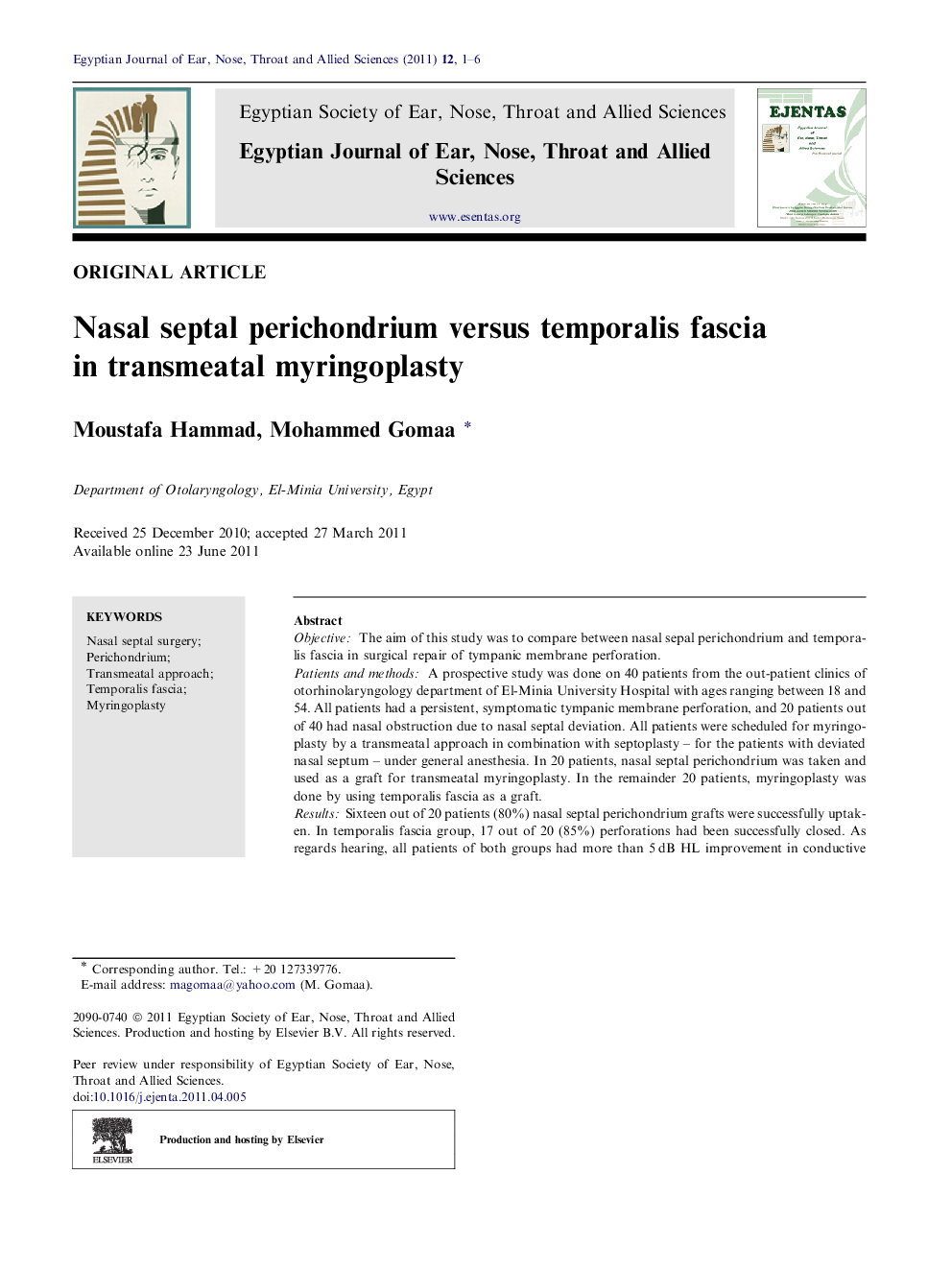| Article ID | Journal | Published Year | Pages | File Type |
|---|---|---|---|---|
| 4109058 | Egyptian Journal of Ear, Nose, Throat and Allied Sciences | 2011 | 6 Pages |
ObjectiveThe aim of this study was to compare between nasal sepal perichondrium and temporalis fascia in surgical repair of tympanic membrane perforation.Patients and methodsA prospective study was done on 40 patients from the out-patient clinics of otorhinolaryngology department of El-Minia University Hospital with ages ranging between 18 and 54. All patients had a persistent, symptomatic tympanic membrane perforation, and 20 patients out of 40 had nasal obstruction due to nasal septal deviation. All patients were scheduled for myringoplasty by a transmeatal approach in combination with septoplasty – for the patients with deviated nasal septum – under general anesthesia. In 20 patients, nasal septal perichondrium was taken and used as a graft for transmeatal myringoplasty. In the remainder 20 patients, myringoplasty was done by using temporalis fascia as a graft.ResultsSixteen out of 20 patients (80%) nasal septal perichondrium grafts were successfully uptaken. In temporalis fascia group, 17 out of 20 (85%) perforations had been successfully closed. As regards hearing, all patients of both groups had more than 5 dB HL improvement in conductive hearing thresholds of at least three frequencies. An overall success rate of 92% was recorded in terms of hearing improvement. No significant differences were present between both groups as regards healing and hearing improvement.ConclusionIn patients with simultaneous myringoplasty and septoplasty nasal septal perichondrium was better to be used as a graft material for repair of tympanic membrane perforation to avoid the post-auricular incision to obtain temporalis fascia. In addition, nasal septal perichondrium has other advantages, it is easily accessible, cost-effective, time saving and is sufficiently large.
